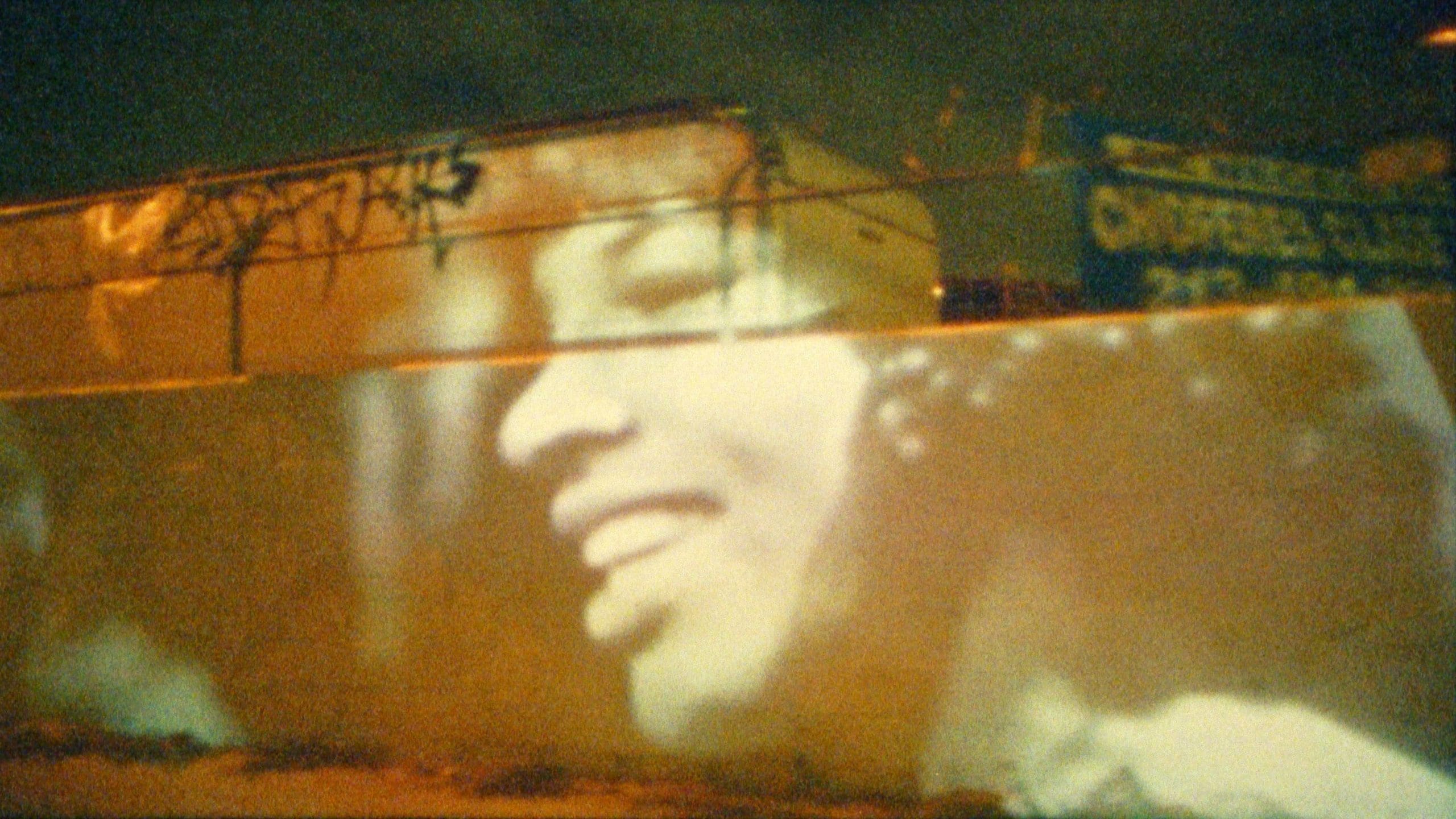

Mark Bradford, Sapphire, 2018, © Mark Bradford. Courtesy the artist and Hauser & Wirth
I watch people enter the gallery and slowly veer towards it, just as I did. ‘Cerberus’ has a gravitational pull. Or there’s a shared desire to be sucked into it.
Cerberus has a gravitational pull. Or there’s a shared desire to be sucked into it
Up close, engulfed in coagulated layers of pigmented paper, I find myself following a red line. I’m unable to establish where it begins and ends in so much space. It’s a while before I realise that these lines — which, from a distance, have the elasticity of thick Pollock-like paint drips or flicks — are actually elasticated ropes, bungee cord.

Mark Bradford, Dancing in the Street, 2019, © Mark Bradford. Courtesy the artist and Hauser & Wirth
Typically used to bind or secure, the rope here is unleashed in spontaneous gesture. At the same time, it forms knotty boundary lines, getting lost in places under thick layers of black material that has the shiny finish of duct tape. In a ‘making of’ video, Bradford invokes the way that tree roots at Angkor Wat have claimed the temples.
Sometimes, what is buried comes to the surface. Geometric patterns, which have been overwritten, masked by abstraction, appear like a circuit board, or excavated bones in a dig. In fact, the base layer — and the starting point for all the works in the exhibition — is an aerial map of Los Angeles, part of the McCone Commission, which sought to identify the root causes of the 1965 Watts riots.
Geometric patterns, which have been overwritten, masked by abstraction, appear like a circuit board, or excavated bones in a dig
Mark Bradford, Frostbite, 2019, © Mark Bradford. Courtesy the artist and Hauser & Wirth
In light of this, Cerberus, the three-headed dog who guards the gates of hell, becomes a figure for boundaries and gatekeepers of a more modern kind: racial segregation, blockbusting, Jim Crow laws, the Thin Blue Line. The baton knocking your hand from the top rail of a police barrier.
While the colours flashing through the black in ‘Cerberus’ have metaphorical potential — red for anger, vitality, say, or for Cerberus’ outstretched tongue, orange for his fiery eyes — the McCone Commission also provides a more literal encoding. The map included green dots for burned-out buildings, blue dots for looted stores, red dots for deaths.
In the ‘making of’ video, Bradford explains how these dots reminded him of the markings on the doors of homes in New Orleans after Hurricane Katrina – “hotspots on the landscape that tried to flatten that pain into data so that it could be understood”.

Mark Bradford, The path to the river belongs to animals, 2019, © Mark Bradford. Courtesy the artist and Hauser & Wirth
Cerberus seems to enact this process in reverse: metamorphosing data back into experience, thereby allowing a re-envisioning of boundaries
‘Cerberus’ seems to enact this process in reverse: metamorphosing data back into experience, thereby allowing a re-envisioning of boundaries; of the ways in which we police difference. A meditation on who gets to draw the lines.
This might seem like a lot — too much — to read into a pullulation of abstract marks, into works where the subject matter is not much composed as oxidised, sedimentised, formed as if by the elements, with no clear focal points. Undeniably, the paintings in ‘Cerberus’ are as much about painting as they are anything else. With their scale, their myriad layers, they pip the critic to the post, before she can say, if we look a little closer; on another level; taking a step back.

Mark Bradford. Cerberus’, Hauser & Wirth, until 21 Dec 2019, ©Mark Bradford. Courtesy the artist and Hauser & Wirth. Photo: Alex Delfanne
But they are also sticky with the world beyond the frame. Bradford’s materials — recycled newsprint, magazines, merchant posters — layered, and then lacerated off with a jet spray gun, gesture to the city blocks outside the gallery, hanging like palimpsestic billboards that have weathered many storms.
There is hope that the ugliness in our culture might be contained. Mark Bradford’s works, flaring up like riots, refuse to be
Just as the abstract expressionism of the 50s shifted the arena from a canvas on an easel to an artist going mano a mano with a wall or floor, Bradford’s work enlarges the field again: Action Painting, for a world that requires us to act.

Mark Bradford. Cerberus’, Hauser & Wirth, until 21 Dec 2019, ©Mark Bradford. Courtesy the artist and Hauser & Wirth. Photo: Alex Delfanne
Works that blur from aerial views of cities to imaginary, turbulent landscapes remind us that legislation like Jim Crow laws enforcing racial segregation are visions — myths, even — which have violent, material consequences. Enacted, and reacted against.
As we toggle between maps of pandemics and viruses under the microscope, there is the hope that the ugliness in our culture might be contained. Mark Bradford’s works, flaring up like riots, refuse to be.



